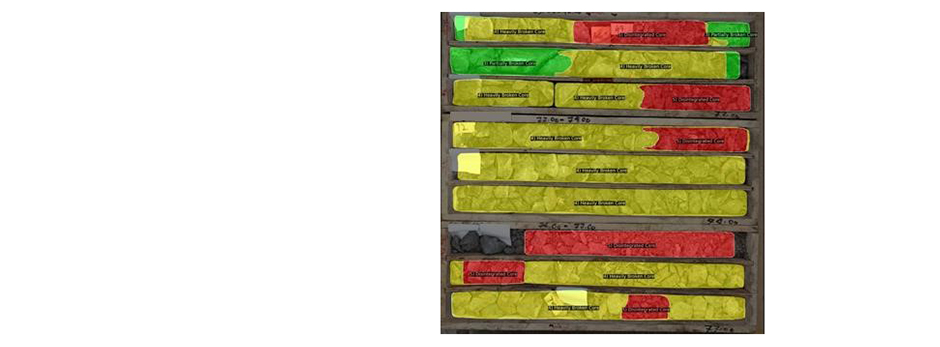Machine learning technologies are progressively adopted in most industries to improve value and solve problems. This technology is based on algorithms that learn how to make predictions based on example inputs. Some of these algorithms allow predictions to be made from images. These deep learning algorithms are called convolutional neural networks and can be used for image classification, object detection, semantic segmentation or instance segmentation tasks. They have been used successfully for numerous applications including for self-driving cars.
The capacity that these machine learning algorithms have to rapidly describe large quantities of images, along with their repeatability, and their known accuracy present significant advantages for repetitive and in part menial tasks like drill core logging. However, machine learning models have disadvantages such as the need for high-quality training data and limitations such as the requirement to retrain models for different geological contexts or image quality. A series of examples of applications on drill core images can be used to illustrate the advantages and limitations of using machine learning technologies to automatically map geological features along core.
Core needs to be linearized and depth-referenced to allow the mapping of depth features. Several methods can be used to accomplish these tasks up to a high degree of accuracy. However, errors can be made when images are of low quality or when intervals of core loss are present. Geological features such as veins, breaks, rock quality, lithology, and alteration can be mapped using various machine learning algorithms and workflows. The accuracy of the results depends on numerous factors such as image quality, training data quality, and the nature and variability of the geological features being mapped.
Machine learning algorithms add value when used for mapping core in settings with large quantities of core being drilled, and where the geological context is already well understood, which allows to have sufficient training data and reliable QA/QC procedures. However, automated logging is not ideal where the geological context is not fully understood, and the interpretations are still being developed. For this reason, automated logging is ideally used to support logging geologists, to complete QA/QC or to relog core using a new interpretation within well-developed projects with many drillholes already completed.
Soon, reliable general models will be developed that can be adapted to a new project without any retraining. However, automated logging will only remain a tool to help geologists improve their speed and accuracy, as it cannot replace the interpretations skills and insights of a geologist.

